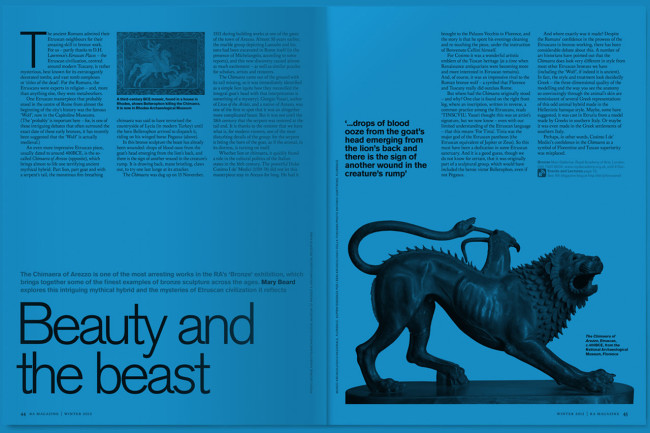More than meets the eye: Julian Barnes on art
By Edmund Fawcett
Published 28 August 2015
In his new book of essays, Julian Barnes offers insightful lessons in how to look at – and read about – art.
-
From the Autumn 2015 issue of RA Magazine, issued quarterly to Friends of the RA.
In Keeping an Eye Open, a collection of well- tailored essays written at various times from 1989 to 2013, the British novelist Julian Barnes focuses on artists he loves and admires. All but five of the 17 he writes about were either French or worked in France. The two oldest, Théodore Géricault and Eugéne Delacroix, were born before the 19th century, the youngest, Georges Braque, in 1882. Each was in one way or another a figurative painter. It always made sense to ask of their work, “What’s this a picture of?” It’s a question Barnes is very good at, especially when the answers aren’t obvious.
Take Géricault The Raft of the Medusa (1819; above). It is obviously a picture of castaways or shipwreck survivors. You can tell that by looking. A marvellous essay in Barnes’s A History of the World in 101?2 Chapters, reprinted here, reminded readers how much more could be learned about the painting than just by looking. His essay described the historic loss of an unseaworthy French ship, the political row that followed, the artist’s own decision to say something big about the calamity in paint and the artistic choices he then faced. After much reading and several false starts, Géricault settled on one vivid scene from a drawn-out maritime drama and then worked out how to show that scene to greatest effect. On finishing Barnes’s fact-filled chapter you think, “Now I know what it’s a picture of.”
Barnes senses when to press such questions, and when to stop. He has an eye for particulars and an English distrust of speculation. If he has a visual hunch but no supporting facts, he nudges us to see it his way with an undogmatic “perhaps”. Barnes praises the late critic David Sylvester for that instructive kind of “perhapsiness”.
-
Audio
Julian Barnes on Manet
In this extract from the audioguide for the 2013 Royal Academy exhibition ‘Manet: Portraying Life’, Julian Barnes discusses Edouard Manet’s painting Portrait of Emile Zola.
-
Barnes is nagged by two larger doubts. Can any writer’s words add to what is there to see when we look at art? More than once he mentions painters’ common contempt for art writing but braves the scorn and keeps going. Some works cry out for words, some works repel them. Barnes tends to write about the first kind.
A related worry is how far artists’ lives bear on their art. Although Barnes writes that “Art tends to float free of biography,” he also sees biography’s appeal. The essay on Delacroix celebrates a re-edition, in 2010, of his complete Journals. Those on Cézanne, Bonnard, Braque and Lucian Freud are really expansive reviews of artists’ biographies. A strict line here would be ‘working life, yes; personal life, no’. The dull truth is that artists’ lives, like everyone’s, involve grind and persistence. Few are temperamental celebrities with Bohemian sex lives. Barnes salutes dullness but finds room for the excitements.
Barnes’s non-French artists include René Magritte, his own English friend Howard Hodgkin and the American Claes Oldenburg. The stand-out among these tail-end pieces is on Freud – a masterly display of how to let air out of a big reputation without a hiss.
Though Barnes loves painting, he doesn’t make a doctrine of his love. The piece on Ron Mueck’s work in the RA’s Sensation exhibition (1997) shows guarded openness to post- painterly art. Most art is bad and always was, Barnes writes. We shouldn’t judge art now, he suggests, more strictly than we judge past art.
Keeping an Eye Open brims with palatable maxims of the kind. Read through or cherry- picked, it offers sage lessons in keeping an eye out for art and an ear open for what’s written about it.
Keeping an Eye Open: Essays on Art by Julian Barnes, £16.99 softback, Jonathan Cape Edmund Fawcett is a journalist and writer. His book Liberalism: The Life of an Idea (Princeton) is out in paperback in September.
-
-
Enjoyed this article?
Become a Friend to receive RA Magazine
As well as free entry to all of our exhibitions, Friends of the RA enjoy one of Britain’s most respected art magazines, delivered directly to your door.
Why not join the club?

-




